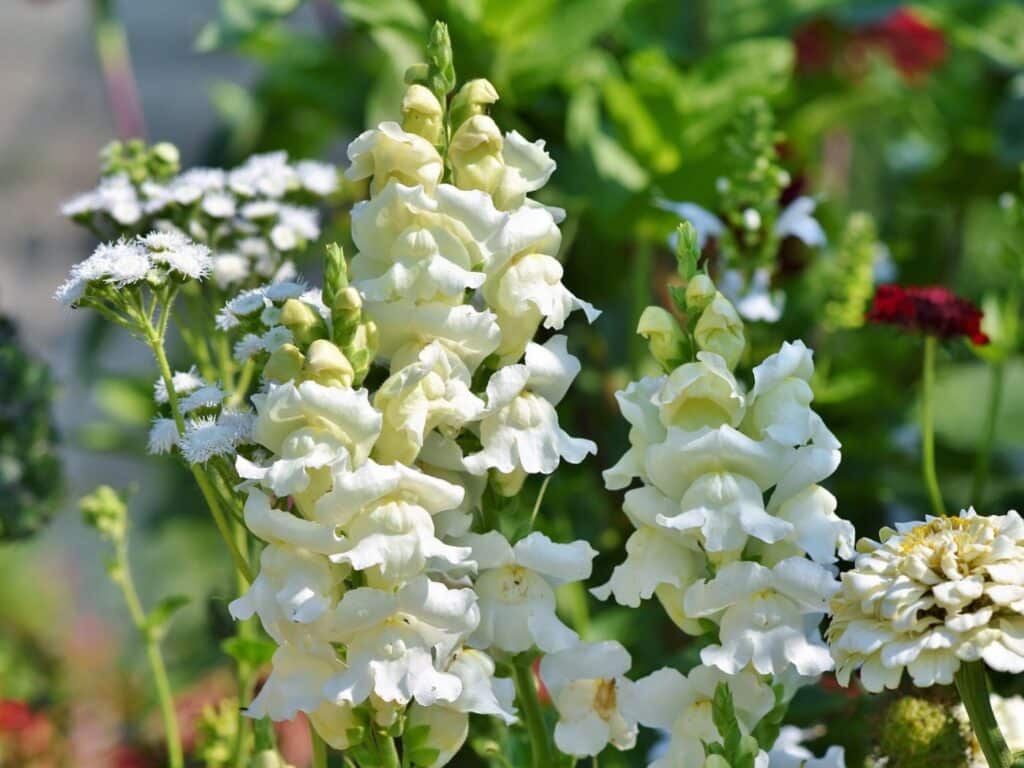Snapdragons (Antirrhinum) are a classic in flower gardens because these plants produce showy flowers on tall spikes and come in various colors.
These bright, spiky flowers will bring your garden to life with their vivid tones, and they are perfect for creating beautiful mixed borders, cutting gardens, and cottage gardens and can even be used in containers.
Gardeners love to combine snapdragons with companion plants such as licorice plants, petunias, sage, leadwort, love-in-a-mist, or geraniums.
These companion plants will complement the striking snapdragon flowers; they are great for filling out your garden bed and can add lots of texture to your garden. Let’s look at these companion species and discuss creative ways to use them throughout your garden.
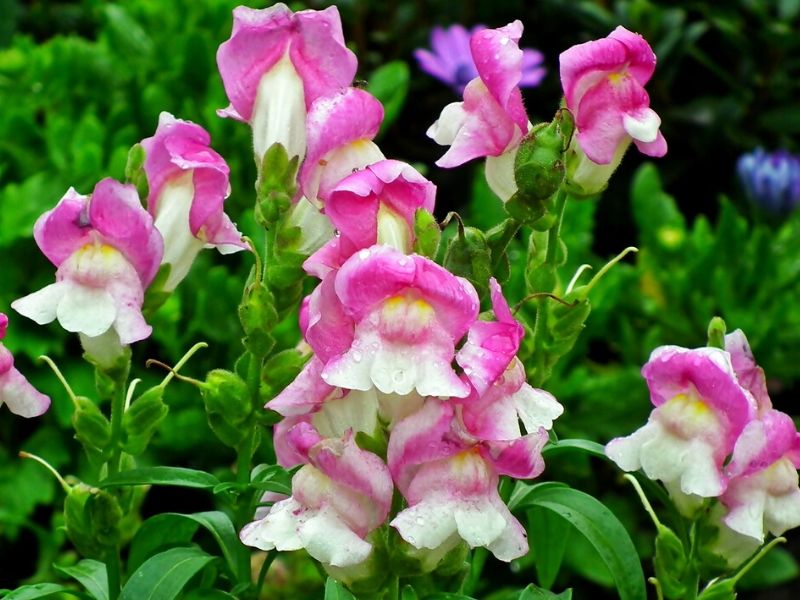
What to Grow with Snapdragons
For vivid garden spaces with lots of vigorous growth, combining plant species with similar growing requirements and a similar growing season is always best.
Snapdragons will only flower properly if it is planted in a sunny position with a minimum of 6 hours of direct sunlight per day. You can also grow them in part shade, but they might only flower slightly in a shaded position. These plants prefer rich soil types that drain well and should be watered regularly to keep them in great shape. Avoid over-watering since this can cause your beautiful flowers to flop over or develop root rot.
These striking flowers will bloom from spring to fall but act like annuals and will die back for the cold winter months.
Here is a quick look at some snapdragon companions growing well in full sun or partial shade with regular watering.
Licorice Plant
Licorice plants (Helichrysum petiolare), also known as a silver bush, everlasting flower, and trailing dusty miller, are great companion plants to consider if you need ground cover for your garden beds. This trailing plant can also look striking in containers and hanging baskets.
In most cases, licorice plants are used annually because they tend to die back for winter in colder regions. These plants can add color and charm to your garden with their blue-tinted, aromatic foliage.
These beautiful plants prefer a full sun position, and they should be planted in well-drained soil. They can tolerate a wide range of soil types, including poor soil, but should be watered sparingly because they are relatively drought-tolerant.
You can use trailing dusty miller as a spiller plant to trail over the edge of your snapdragon containers. This low-growing shrub can also form a striking hedge in front of a row of tall snapdragons.
Petunias
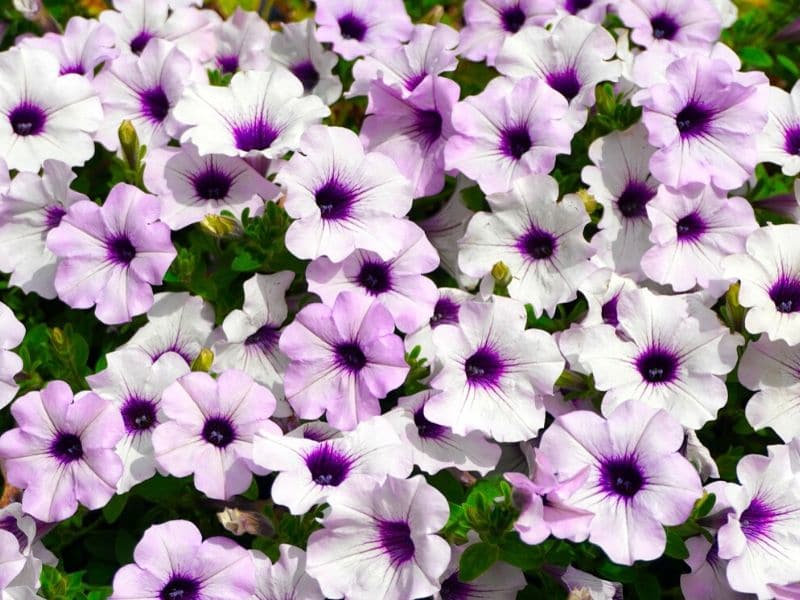
Petunias (Petunia x atkinsiana) are perfect snapdragon companion plants if you want your garden to explode in color. These flowers come in many vivid colors and complement the bright snapdragon blooms well.
Petunias love lots of direct sunlight, and they should be planted in well-drained soil because they are prone to develop root rot in moist conditions. These bright flowers are hardy and only need moderate watering.
The beautiful flowers can be used as a border in front of taller snapdragons, or you can use them as a filler plant in containers like window boxes or hanging baskets.
Sage
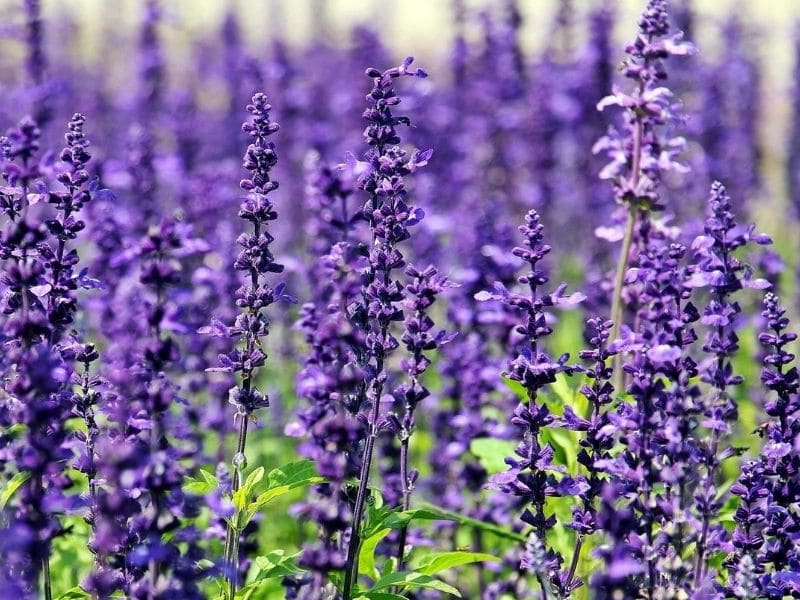
Sage (Salvia) is a great species to pair with snapdragons because its blue-tinted velvety leaves will add great contrast. This culinary herb also produces showy purple flowers on tall spikes that look striking alongside or among snapdragon blooms. The shrubs will keep your garden nice and full when the annuals die back for winter.
Sage can grow in partial or light shade, but it will only flower properly if placed in full sun. This evergreen perennial will flourish in most soil types if it drains well, but it should be watered moderately, or the root system won’t develop properly.
You can grow sage bushes in front of tall snapdragons or pair species with similar heights along one another in the same garden bed to form showy hedges or borders.
Leadwort

Leadworts (Plumbago) will add lots of cheer to your garden because it produces whimsical blue flowers. This bushy shrub is ideal for creating borders, but many also use it as a ground cover so it will keep the soil cool.
Leadwort shrubs can grow in partial shade or full sun, but they flower best with a minimum of 6 hours of direct sun daily. These plants will flourish if planted in well-drained soil and should be watered more than once a week, especially in dry and warm regions.
You can use this plant as a ground cover for your garden beds or trim it to form a low hedge in front of your snapdragons. Leadwort shrubs can grow up to 10 feet tall and can also be used to form taller hedges as a backdrop for your beautiful flowering annuals.
Love-in-a-Mist
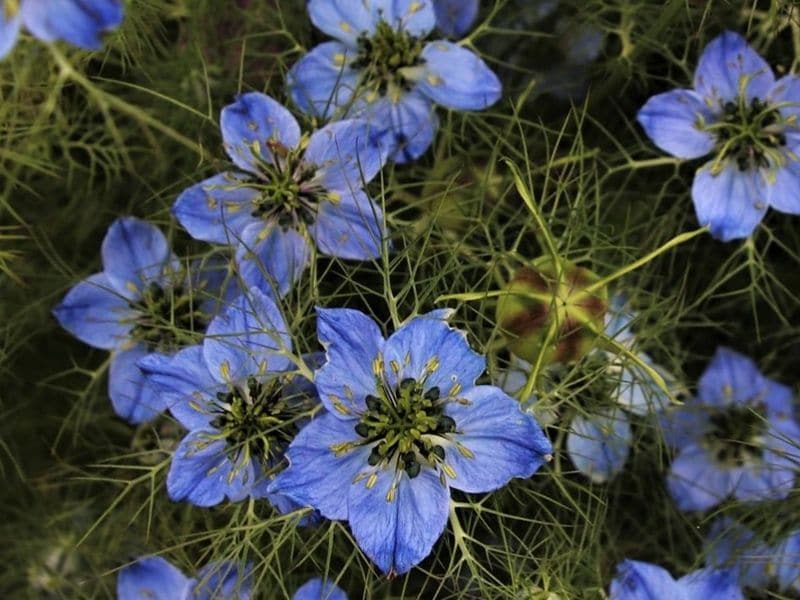
Love in a Mist Flower (Nigella damascena) or Devil in the Bush is a flowering plant that produces interesting blooms like bright blue, pale blue, white, pink, or lavender. These plants will add lots of texture to your garden because it has interesting needle-like foliage.
The flowers will flourish if you place them in a sunny position. They enjoy consistent moisture and should be deeply watered when the soil becomes dry. The flowers can be planted in most soil types if it drains well.
These annuals have a similar height to snapdragons, so you can easily mix the two plants all over your garden bed to create an interesting effect.
Geraniums
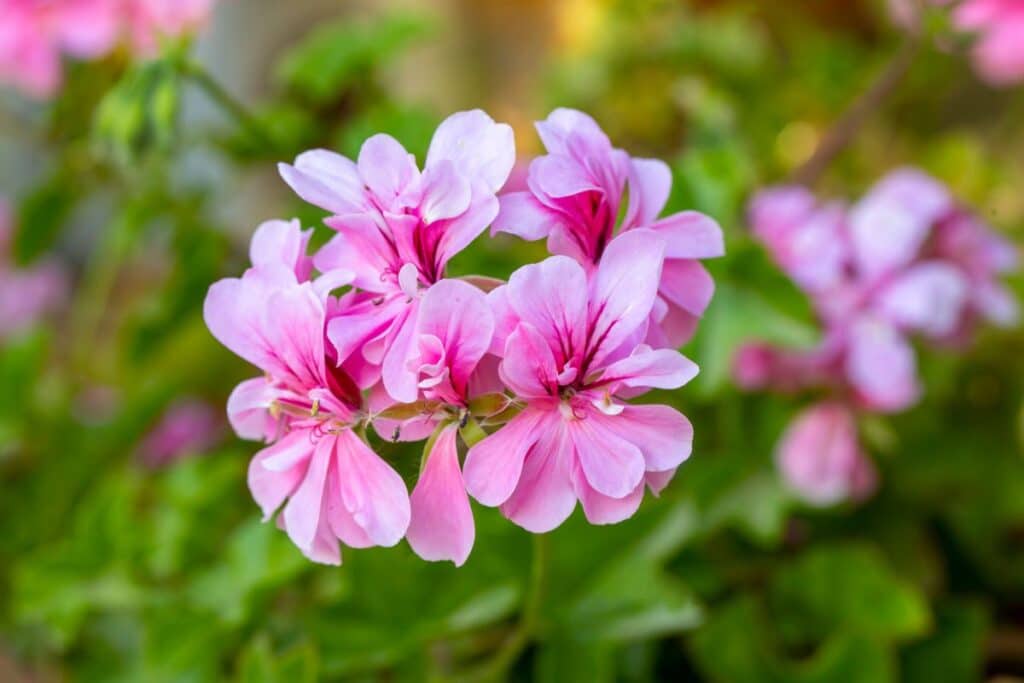
Geraniums (Pelargonium) are also good snapdragon companions because they are vivid bloomers in many colors. The evergreen foliage of these flowering shrubs can keep your garden beds nice and full.
These plants are straightforward to grow from cuttings and are easy to trim or prune. They will take well to any free-draining soil type and should be watered moderately. Most varieties of geranium love full sun positions, but some varieties, like Ivy geranium prefer light shade areas.
You can use these interesting plants to create a showy hedge or backdrop for your snapdragons or use these shrubs as a filler in front of tall snapdragon varieties.
What NOT to Grow with Snapdragons
Snapdragons are easy to grow and their flexible nature makes them easy to pair with a wide range of plants.
These plants need lots of direct sunlight or they won’t flower properly. Because they rely so much on sunlight, it is best not to pair them with shade-loving species like hostas, begonias, or ferns.
Snapdragons must also dry out thoroughly between waterings or they will develop root problems. Moisture-loving plant species like coral bells, cattails, or elephant ears are not too likely to grow well alongside these plants.
Landscaping Ideas for Snapdragons and Companions
There are lots of different ways to use snapdragons in your garden. These plants are very flexible and can be grown in the soil or in containers. Here is a quick look at some creative ways to use these vivid flowers and other companion plants in your garden.
Flowering Borders or Hedges
A row of tall snapdragons behind a row of short flowering plants like petunias will create a beautiful rainbow effect. You can use this combination of florals to create showy hedges or borders around flower beds, driveways, or in front of walls or fences.
Container Gardens
Snapdragons can grow well in containers and its tall stature and showy appearance makes it ideal as a thriller plant in mixed containers. You can pair it with a filler plant like geraniums, petunias, or leadplants and complete the look of your hanging baskets or window boxes with a trailing plant like ivy geranium or leadwort that can spill over the edge of your containers.
Final Thoughts
Snapdragon is essential for flower gardens and can brighten up any dull space. These vivid flowers look charming if you grow them next to companion plants like licorice, petunias, sage, leadwort, love-in-a-mist, or geraniums.
We hope this guide gave you many creative landscaping ideas and that you will have lots of fun combining these different species in your garden spaces.
Learn more about Snapdragon’s meaning to see why people love this flower!

